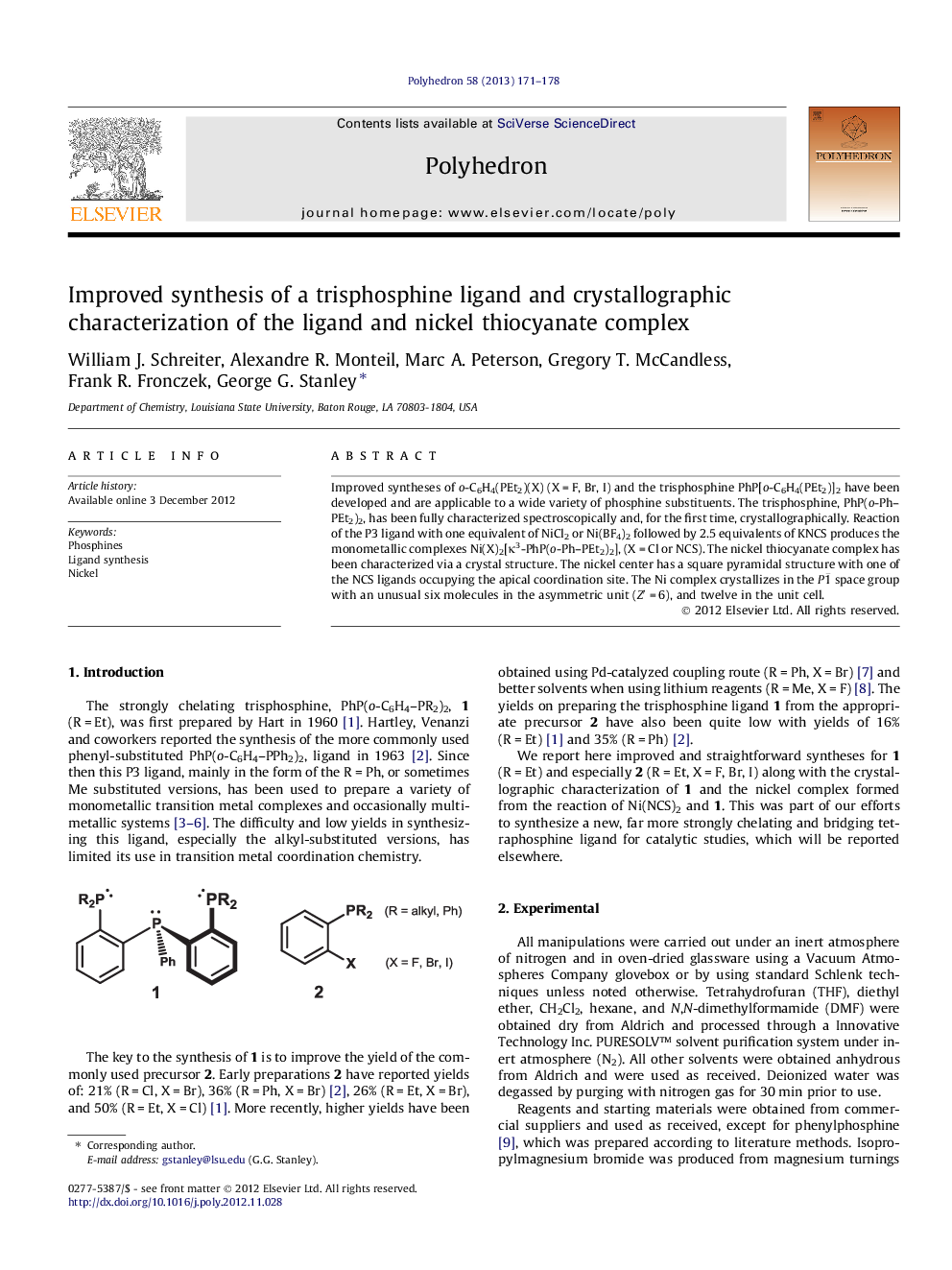| کد مقاله | کد نشریه | سال انتشار | مقاله انگلیسی | نسخه تمام متن |
|---|---|---|---|---|
| 1334561 | 1500281 | 2013 | 8 صفحه PDF | دانلود رایگان |

Improved syntheses of o-C6H4(PEt2)(X) (X = F, Br, I) and the trisphosphine PhP[o-C6H4(PEt2)]2 have been developed and are applicable to a wide variety of phosphine substituents. The trisphosphine, PhP(o-Ph–PEt2)2, has been fully characterized spectroscopically and, for the first time, crystallographically. Reaction of the P3 ligand with one equivalent of NiCl2 or Ni(BF4)2 followed by 2.5 equivalents of KNCS produces the monometallic complexes Ni(X)2[κ3-PhP(o-Ph–PEt2)2], (X = Cl or NCS). The nickel thiocyanate complex has been characterized via a crystal structure. The nickel center has a square pyramidal structure with one of the NCS ligands occupying the apical coordination site. The Ni complex crystallizes in the P1¯ space group with an unusual six molecules in the asymmetric unit (Z′ = 6), and twelve in the unit cell.
Improved syntheses of o-C6H4(PEt2)(X) (X = F, Br, I) and the trisphosphine PhP[o-C6H4(PEt2)]2 have been developed and are applicable to a wide variety of phosphine substituents. The trisphosphine, PhP(o-Ph–PEt2)2, has been fully characterized spectroscopically and, for the first time, crystallographically. Reaction of the P3 ligand with one equivalent of NiCl2 or Ni(BF4)2 followed by 2.5 equivalents of KNCS produces the monometallic complexes Ni(X)2[κ3-PhP(o-Ph–PEt2)2], (X = Cl or NCS). The nickel thiocyanate complex has been characterized via a crystal structure.Figure optionsDownload as PowerPoint slide
Journal: Polyhedron - Volume 58, 13 July 2013, Pages 171–178